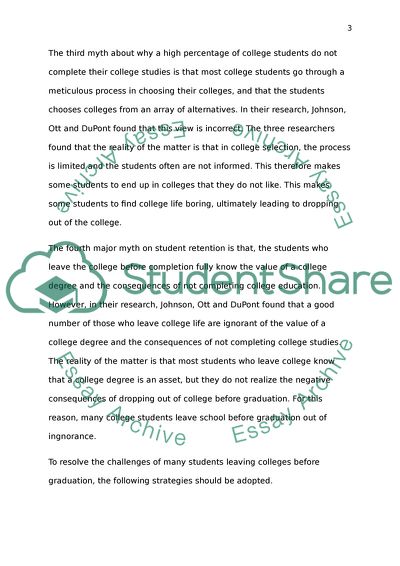Cite this document
(A Discussion on Myths and Realities Associated with Student Retention Essay Example | Topics and Well Written Essays - 2250 words, n.d.)
A Discussion on Myths and Realities Associated with Student Retention Essay Example | Topics and Well Written Essays - 2250 words. https://studentshare.org/sociology/1826321-midterm
A Discussion on Myths and Realities Associated with Student Retention Essay Example | Topics and Well Written Essays - 2250 words. https://studentshare.org/sociology/1826321-midterm
(A Discussion on Myths and Realities Associated With Student Retention Essay Example | Topics and Well Written Essays - 2250 Words)
A Discussion on Myths and Realities Associated With Student Retention Essay Example | Topics and Well Written Essays - 2250 Words. https://studentshare.org/sociology/1826321-midterm.
A Discussion on Myths and Realities Associated With Student Retention Essay Example | Topics and Well Written Essays - 2250 Words. https://studentshare.org/sociology/1826321-midterm.
“A Discussion on Myths and Realities Associated With Student Retention Essay Example | Topics and Well Written Essays - 2250 Words”. https://studentshare.org/sociology/1826321-midterm.


